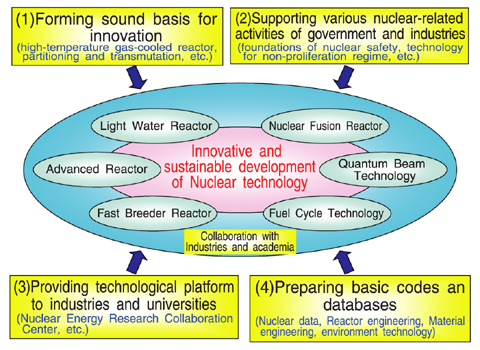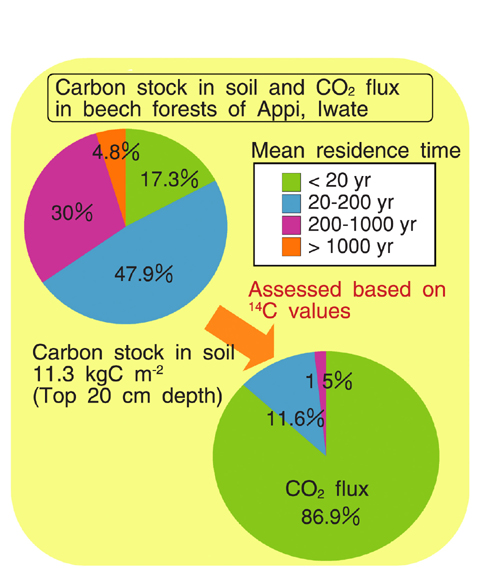
Fig.7-1 Roles of Nuclear Science and Engineering Research

Fig.7-2 Carbon Cycle in Forests
The nuclear science and engineering R&D activities at the Japan Atomic Energy Agency have the four roles shown in Fig.7-1. In order to fulfill these roles, research in nuclear data and reactor engineering, fuels and materials engineering, environment and radiation science, and nuclear applied heat technology is being conducted.
Various types of research are being performed to investigate the feasibility of advanced nuclear systems and to establish the basic technology for these systems. Development of nuclear data evaluation codes in Topic 7-1 and measurements of nuclear data are continuing, and the JENDL Actinoid file 2008, which can predict FBR neutronic characteristics with higher precision, was completed. The extended bias factor method was established to evaluate nuclear design accuracy based on multiple criticality experiments and to identify new experiments needed for achievement of the required accuracy. Detailed two-phase analysis codes processed with supercomputing technology as well as model experiments for code validation are being developed to establish new thermal design methods for advanced nuclear systems. Topic 7-2 describes a three- dimensional thermal-hydraulic measurement to build a detailed database for code validation. Basic studies on transmutation of long-lived nuclides are being conducted so as to reduce the burden of radioactive waste management.
Basic studies on advanced nuclear fuel and cycle technology and the degradation of nuclear power plant materials are being made. In the advanced nuclear fuel cycles, minor actinides (MA), which are classified as high level radioactive wastes in the current nuclear fuel cycle, are expected to be recycled to reduce the burden of waste disposal. To develop this technology, it is required to understand and control behavior of MA in the system. We are, therefore, performing R&D on separation technology of actinides and fission products, such as high decontamination (high purity) uranium separation by mono-amide extractants, together with fabrication technology and property measurements of MA-bearing fuels (Topic 7-3). Moreover, R&D is being carried out on irradiation effects of materials for nuclear reactors, the corrosion damage mechanism of stress corrosion cracking of reactor structural materials, and the corrosion mechanism of reprocessing plant materials. Topic 7-4 describes the result of recent research on stress corrosion cracking mechanisms.
R&D on environmental behavior of radionuclides (Fig.7-2), utilization and detoxication techniques of wastes, and advanced analytical and monitoring techniques for ultra-trace amounts of substances in the environment are being carried out, together with R&D on fundamental mechanisms of biological radiation effects, dose assessment, and a shielding calculation technique for various radiations. Topic 7-5 describes development of a radionuclide database which enables accurate dose assessment on a gene level. Topic 7-6 describes the only environmental sample analysis method which can determine 235U enrichment in micro-particles, a safeguard technology without mass spectrometry.
To expand nuclear energy application to heat utilizing industries, we are continuing extensive R&D for high-temperature gas-cooled reactor (HTGR) technology and for an HTGR-heated hydrogen production system. Through the first 30 day full power operation of the High Temperature Engineering Test Reactor (HTTR), the HTTR fuel exhibited excellent fission product retention. Moreover, we are performing R&D for an advanced core characteristic evaluation technique based on the HTTR data, for higher fuel burn-up and long-life graphite structure. Topic 7-7 describes the development of ZrC coated fuel particles. For hydrogen production, research for a higher efficiency thermo-chemical IS process (Topic 7-8) is being carried out, together with research into concentration of hydrogen iodine using a polymer electrolyte demarcation membrane, corrosion resistant materials, use of glass lining for hot section piping, and an indirect measuring method of composition of the sulfuric acid and hydrogen iodide solution.